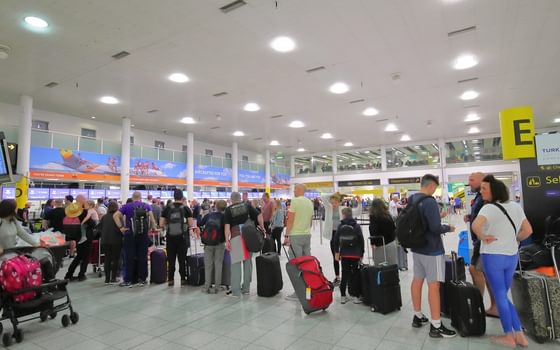The state of the planet is scary — but that’s just the start
Scaring people is only the first step in driving climate action - we have to then show people how to channel their fear
14 August 2017
This piece first appeared at Business Green and is reproduced here with permission.
Last week marked Earth Overshoot Day. August 2 was 2017’s date roughly calculated as when we’ve started to cause more impact on the ecosystem than it can safely absorb, and used more of its resources than it can comfortably renew. That’s a global figure, by the way: rich countries’ individual overshoot days are much earlier (May 4 for the UK).
Overshoot Day’s scary. It keeps edging closer to spring. Every year, we hack further into planetary boundaries. The unsustainable becomes unignorable. Climates warm. Seas rise. Forests fall. Coral reefs bleach. People die.
As a communications device, Earth Overshoot Day is pretty effective. Many newspapers covered it. I did a TV interview about it, stood in a park in the drizzle. I was asked four questions. Three of them were about what Earth Overshoot Day is; the fourth was about what we should do about it. On this latter question, in something like seven seconds, I tried to say something remotely concomitant with the scale of the challenge. I mostly failed, as we all mostly fail. So I thought I’d try again.
This stuff is monumentally terrifying. Earth Overshoot Day implies that we really might do something apocalyptically bad to the only place in the universe where we know for sure that we can live. And there’s a lot of apocalypse around at the moment. A recent long read in New York magazine painted one heck of a bleak picture of what climate change could do to life on Earth. “It is, I promise you,” the author begins, “worse than you think.” What follows is a laugh-packed canter through the full range of ways in which humanity could be on the brink of devastation — from disease to food collapse to war. The piece sparked furious debate — principally about whether it does any good at all to spell out to people precisely how doomed we all are. What are you supposed to do with information like that?
On one hand, a bit of fear is probably a good idea. A planetary crisis is a thing we need to Do Something About — a something that is nebulous and almost certainly less diverting than watching Love Island and eating crisps. As David Roberts writes at Vox: “Most people simply have no idea how scary climate change is. However that terrible urgency is communicated, the world is better for it.” And it is scary — make no mistake. Scary today. Scary already.
But scary without feeling like you can do something about it — without agency — is just dull, dead panic: rabbity-headlights time. In an upcoming book on what he calls ‘climate apathy’, pollster Leo Baresi will explore the “billions of people who have heard plenty about climate change and acknowledge there’s a problem, but who are just not engaged enough to stimulate the change required to stop it.”
Portraying the scale of how we’re going wrong compels us to inspire and empower people to do something about it: to turn that listless, paralysing fear into action. That’s our job. All of us: businesses or NGOs, campaigners or commentators. To help tell the story that comes next, that comes after the dread.
An axiom of campaigning is that motivating and empowering people to act requires three things: anger, hope and action. But it does not necessarily follow that freaking out about the ever-earlier Earth Overshoot Day makes us angry. It should: a second’s thought about the vast wealth and power of fossil fuel companies, their legacy of casting doubt over the science of climate change, and their grip on establishment thinking will do the trick.
It doesn’t follow either that we can easily turn this anger into hope. But against the backdrop of crisis are a million reasons to be cheerful. The innovators and the entrepreneurs rapidly devising tomorrow’s technology, today, for example. The campaigners from across the country that joyously flocked to Preston New Road over the course of July to hold off the frackers. The “wild possibilities” of Rebecca Solnit’s galvanising Hope in the Dark: the flame of optimism that burns through the despair, that gets us out of bed in the morning, and which rewards the instinctive human desire to see “what might lie beyond these situations that are perhaps not inevitable and immutable.”
And then there’s the action. No, there isn’t “one thing we should do.” That includes any economist that tells you all you need to do is bring in a huge carbon tax, without explaining how on earth that’s any more likely to make it through our clammy and reactionary political system than anything else. Things like climate change are too multi-faceted; everything is environment, and environment is everything. Jonathan Rowson’s seven dimensions of climate change are probably just a start. Not only that, but people are too strange and unpredictable to be shoehorned into what a line on a graph says they should do, as I’ve argued previously.
The most important thing is that whatever we do takes a bit of power away from someone, somewhere, who doesn’t want things to change, and gives it to people who do. It’s a principle that links Elon Musk with community energy projects. Start taking back the power, and demand that our politicians and leaders keep up — which they will, in the end.
So do apocalyptic tales of destruction, or encroaching indicators of environmental loss, have a purpose? Yes. Be afraid. But then get angry, and start turning that anger into a million small changes. In a world increasingly characterised by the potential for rapid social change, hope and action could trigger big changes, very fast — big changes we most definitely need.
Topics Climate change Energy






